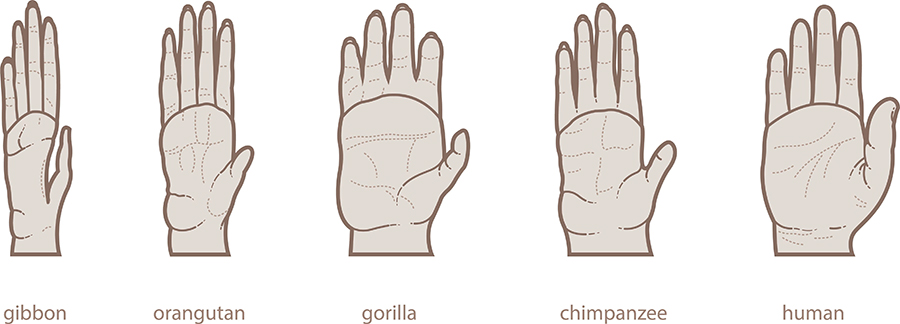- Behavior leaves very little evidence in the fossil record, we use living primates to test hypotheses about how our hominin relatives responded to environmental variation, and to gain insight into their social lives.
Highlights
Humans are more closely related to nonhuman primates than we are to any other animal group. As such, we share with them a host of morphological, physiological, developmental, and behavioral traits. The existence of this array of the same relation, relative position, or structure traits, the product of the common evolutionary history of the primates, means that nonhuman primates are useful models for understanding the evolutionary roots of human biology and behavior.

The hand of each primate has evolved to serve behavioral and biological needs. Image credit Shutterstock
Primates range in size from the pygmy mouse lemur, which weighs about one ounce, to the male gorilla, which weighs about 350 pounds. Some species live in dense tropical forests, while others live in woodland or savanna habitats. Some are solitary and nocturnal, while others live in large groups and are active during the day.

Pygmy mouse lemur (left) and Silverback gorillas (right) each belong to the primate genus. Image credit (lemur) https://animals-are-cool.fandom.com/wiki/Pygmy_Mouse_Lemur?file=Mbe_lge_148.jpg; (Silverback) https://gorillafund.org/gorilla-protection/celebrating-the-life-of-silverback-gorilla-mafunzo/
Such differences between closely-related animals provide the opportunity to study how species adapt to specific ecological conditions. Because behavior leaves very little evidence in the fossil record, we use living primates to test hypotheses about how our hominin relatives responded to environmental variation and to gain insight into their social lives.
Written by Joan Silk PhD